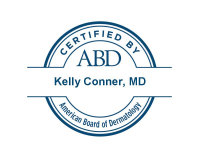Skin Conditions & Treatments > Molluscum contagiosum
Dermatology A-Z
Molluscum contagiosum (MC) is a viral skin infection seen most commonly in youngschool-aged children. MC typically causes small flesh-colored or pink bumps on the skin which can occur anywhere on the body. As the name suggests, this infection is extremely contagious and is spread person to person by physical contact. Sometimes they are called “water warts” because they are spread in the pool and shared tubs as well. The bumps are usually painless but may be itchy, cosmetically undesirable and can last for up to 2 years.
After contact with the virus that causes them, MC may incubate for 8 weeks before appearing on the skin. Scratching or picking the bumps is one way the virus can spread. Children with eczema are more prone to spreading the virus because their skin is more dry and itchy. After several months (usually 6-18 months) the bumps will become red and resemble large pimples. This change in appearance is usually a good sign and signifies that the immune system is recognizing the presence of the virus and is attempting to clear it. This event is usually mistaken as an “infection” but you should really look at it as “the beginning of the end!”
Siblingswho do not have MC can be protected by bathing separately and not sharing towels/washcloths with the affected sibling. Wash skin with soap/water if there is contact with a lesion.
Thereare several approaches to treatment of MC. There is no wrong answer, only parent or patient preference. A combination of therapies can also be utilized:
Cryotherapy (freezing): A very cold spray is applied carefully to each lesion. This is reserved for olderchildren because it stings. Small blisters form, separating the wart from the skin.
Cantharadin (Blister Beetle Juice Treatment):Application of a chemical made from blistering beetles is a painless in-office destructive procedure. A small amount is applied to each lesion, frequently it is then covered with tape. After 4-8 hours, soak in the shower or tub and remove the tape gently. If pain or burning is intolerable, removal of the tape and cleansing can occur earlier. Removal of the tape can be uncomfortable, we apologize! Tylenol or Ibuprofen is appropriate. Wash thoroughly with soap and water to remove the beetle juice entirely. Aggressive scrubbing is not required. Water blisters form over the next 1-2 days. The blisters will crust up over the next week and finally fall off taking the bump with it. Apply Vaseline during this time of crusting. An area of altered pigmentation or redness is common and temporary. Scarring is very rare and even untreated MC can sometimes leave a small scar. Repeat treatments may be required every 2-3 weeks but complete resolution is common within 1-3 applications.
Click on the links below for more information:









